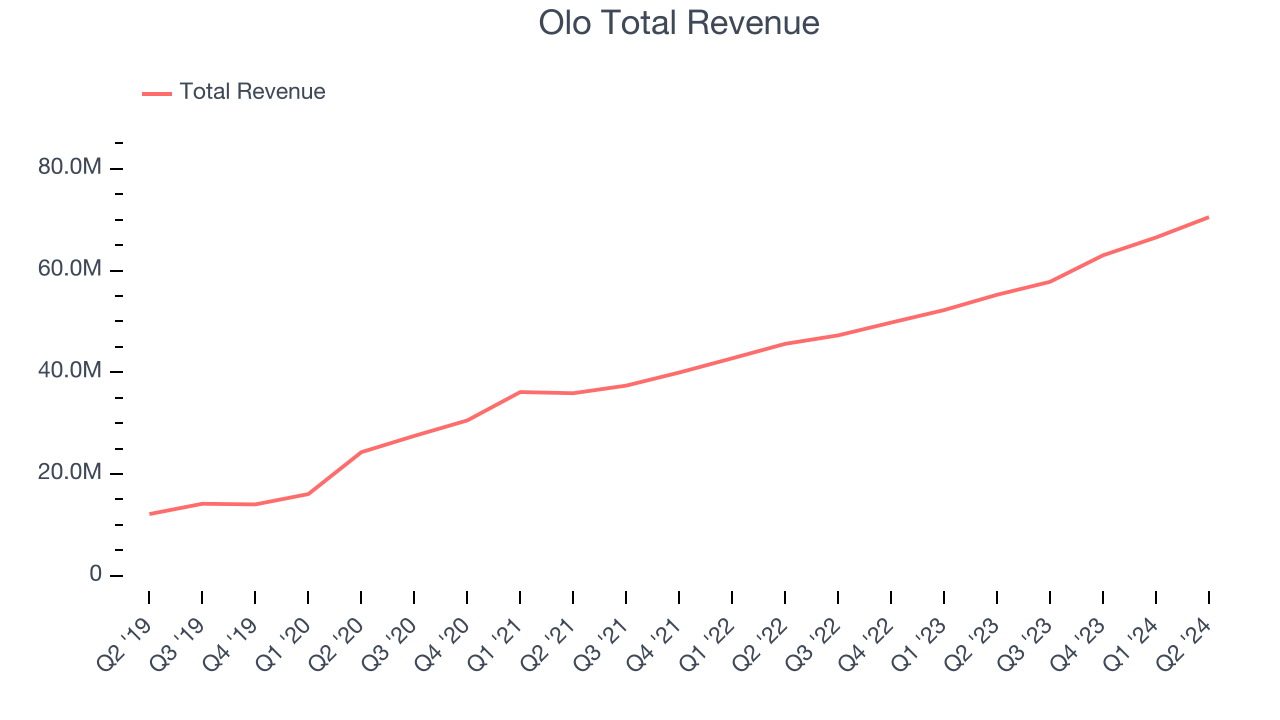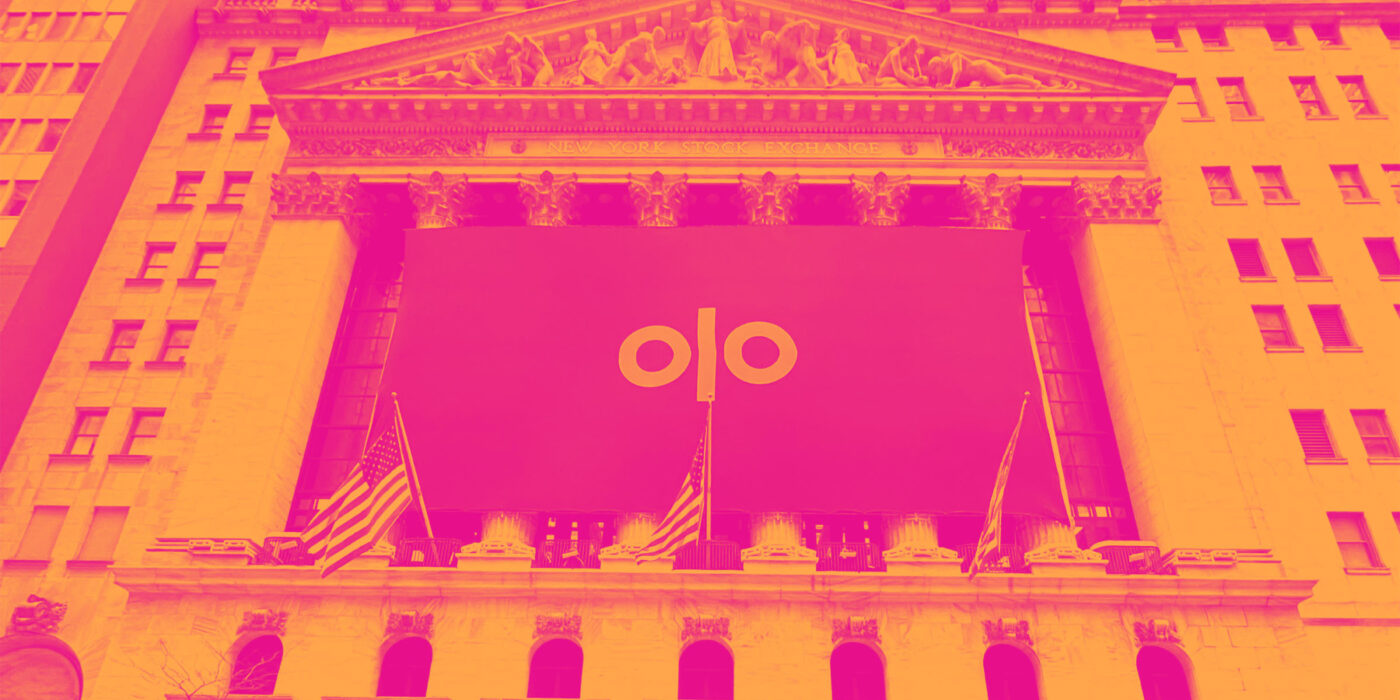As the Q2 earnings season wraps, let’s dig into this quarter’s best and worst performers in the vertical software industry, including Olo (NYSE:OLO) and its peers.
Software is eating the world, and while a large number of solutions such as project management or video conferencing software can be useful to a wide array of industries, some have very specific needs. As a result, vertical software, which addresses industry-specific workflows, is growing and fueled by the pressures to improve productivity, whether it be for a life sciences, education, or banking company.
The 15 vertical software stocks we track reported a mixed Q2. As a group, revenues beat analysts’ consensus estimates by 1.9% while next quarter’s revenue guidance was 1.1% above.
After much suspense, the Federal Reserve cut its policy rate by 50bps (half a percent) in September 2024. This marks the central bank’s first easing of monetary policy since 2020 and the end of its most pointed inflation-busting campaign since the 1980s. Inflation had begun to run hot in 2021 post-COVID due to a confluence of factors such as supply chain disruptions, labor shortages, and stimulus spending. While CPI (inflation) readings have been supportive lately, employment measures have prompted some concern. Going forward, the markets will debate whether this rate cut (and more potential ones in 2024 and 2025) is perfect timing to support the economy or a bit too late for a macro that has already cooled too much.
Luckily, vertical software stocks have performed well with share prices up 17.2% on average since the latest earnings results.
Best Q2: Olo (NYSE:OLO)
Founded by Noah Glass, who wanted to get a cup of coffee faster on his way to work, Olo (NYSE:OLO) provides restaurants and food retailers with software to manage food orders and delivery.
Olo reported revenues of $70.5 million, up 27.6% year on year. This print exceeded analysts’ expectations by 4.1%. Overall, it was a very strong quarter for the company with full-year revenue guidance exceeding analysts’ expectations and an impressive beat of analysts’ GMV (gross merchandise value) estimates.
“In Q2, Team Olo delivered another strong quarter of financial and operational performance. We generated revenue and non-GAAP operating income that exceeded the high-end of their respective guidance ranges, added new enterprise and emerging enterprise brands and expanded with existing customers, and announced another POS integration partnership for Olo Pay and Engage that moves Olo closer to supporting full-stack payment processing and data aggregation across off- and on-premise transactions,” said Noah Glass, Olo’s Founder and CEO.

Olo achieved the fastest revenue growth of the whole group. The results were likely priced in, however, and the stock is flat since reporting. It currently trades at $4.76.
Is now the time to buy Olo? Access our full analysis of the earnings results here, it’s free.
Q2 Holdings (NYSE:QTWO)
Founded in 2004 by Hank Seale, Q2 (NYSE:QTWO) offers software-as-a-service that enables small banks to provide online banking and consumer lending services to their clients.
Q2 Holdings reported revenues of $172.9 million, up 11.8% year on year, outperforming analysts’ expectations by 1.1%. The business had a very strong quarter with an impressive beat of analysts’ billings estimates and full-year revenue guidance exceeding analysts’ expectations.

The market seems happy with the results as the stock is up 21.7% since reporting. It currently trades at $82.14.
Is now the time to buy Q2 Holdings? Access our full analysis of the earnings results here, it’s free.
Weakest Q2: PTC (NASDAQ:PTC)
Used to design the Airbus A380 and Boeing 787 Dreamliner commercial airplanes, PTC’s (NASDAQ:PTC) software-as-service platform helps engineers and designers create and test products before manufacturing.
PTC reported revenues of $518.6 million, down 4.4% year on year, falling short of analysts’ expectations by 2.8%. It was a slower quarter as it posted a miss of analysts’ billings estimates and a decline in its gross margin.
PTC delivered the weakest performance against analyst estimates in the group. Interestingly, the stock is up 1.8% since the results and currently trades at $181.
Read our full analysis of PTC’s results here.
Adobe (NASDAQ:ADBE)
One of the most well-known Silicon Valley software companies around, Adobe (NASDAQ:ADBE) is a leading provider of software as service in the digital design and document management space.
Adobe reported revenues of $5.41 billion, up 10.6% year on year. This print was in line with analysts’ expectations. Aside from that, it was a slower quarter as it recorded underwhelming revenue guidance for the next quarter.
The stock is down 15.2% since reporting and currently trades at $497.70.
Read our full, actionable report on Adobe here, it’s free.
Veeva Systems (NYSE:VEEV)
Built on top of Salesforce as one of the first vertical-focused cloud platforms, Veeva (NYSE:VEEV) provides data and customer relationship management (CRM) software for organizations in the life sciences industry.
Veeva Systems reported revenues of $676.2 million, up 14.6% year on year. This result beat analysts’ expectations by 1.2%. It was a strong quarter as it also produced full-year revenue guidance exceeding analysts’ expectations and a meaningful improvement in its gross margin.
The stock is up 6.5% since reporting and currently trades at $212.35.
Read our full, actionable report on Veeva Systems here, it’s free.
Join Paid Stock Investor Research
Help us make StockStory more helpful to investors like yourself. Join our paid user research session and receive a $50 Amazon gift card for your opinions. Sign up here.
